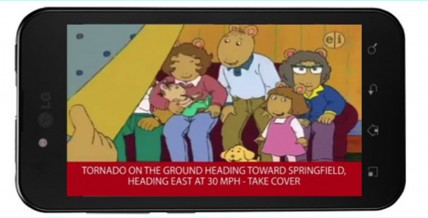Tag: FCC
In spectrum auction, FCC should protect public TV’s coverage
The FCC recently released the entire text of its Report and Order detailing rules for the upcoming broadcast spectrum auctions, making it ...Thursday roundup: Fahle leaving WDET, EFF chimes in on net neutrality
Plus: WFMU opens a new performance space, and Chris Hardwick compares NPR reporters to Star Wars characters.Wednesday roundup: Rosen criticizes NPR ombud posting; contest calls for tote-bag designs
Plus: Scott Nourse joins PBS Digital, and the Radiolab guys visit Colbert.Friday roundup: PRX enlists Jacapps for station apps; FCC divulges data on interference
Plus: an interview with the creator of Vicious, and a boost for Reading Rainbow from Seth MacFarlane.Washington’s WAMU aims to buy signal south of D.C.
WAMU-FM in Washington, D.C., will enter the Fredericksburg, Va., market with the pending purchase of 8,000-watt WWED 89.5-FM. WAMU has proposed to buy ...FCC staff reports fast clip for processing of LPFM apps
FCC commissioners got an update Friday on the status of low-power FM applications, six months after the closing of the most recent ...Monday roundup: APTS, PBS, CPB criticize FCC auction rules; ‘Bob Ross Bar Crawl’ set
• Pubcasting is not happy with the FCC’s spectrum auction report, with three of the system’s major organizations saying June 6 that ...Tuesday roundup: FCC reveals spectrum auction details; Angelou doc goes forward
Plus: A TV quiz show hits its 40th year on the air, and Arthur gets a hip-hop treatment.Wednesday roundup: Pubradio breaks True Detective news; DPTV covers policy conference
And we're still waiting on spectrum auction specifics.FCC denies stations’ bid for looser underwriting language
A public radio licensee’s bid to boost underwriting revenue by skirting restrictions on credit language met with a flat rebuttal from the ...FCC green-lights rules for TV spectrum auctions
The FCC formally adopted rules today for the television spectrum auctions slated for mid-2015. Most of the provisions align with what the FCC has said ...CPB urges FCC to preserve public TV coverage in spectrum auction
WASHINGTON, D.C. — CPB’s Board of Directors unanimously approved a resolution Thursday urging the FCC to avoid allowing “white areas” that would lack ...CPB plans meetings to inform public TV execs about spectrum auction
CPB will convene two meetings about spectrum over the next two months, working to craft guidelines for public TV stations to use ...Wednesday roundup: Cutting locks at Pacifica; concerns about repacking interference
• A new round of unrest is brewing at Pacifica. Current reported last week on the radio network’s board voting to oust executive director Summer ...In spectrum auction decisions, weigh the value of public service
With the unique opportunity presented by the auctions, proper due diligence certainly requires PTV leaders to weigh the potential one-time upside from ...



